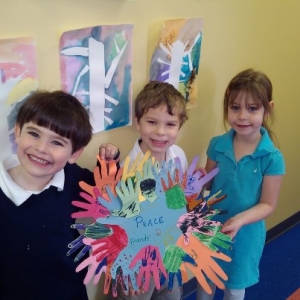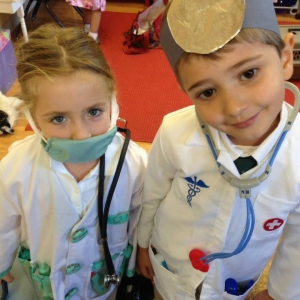Kindergarten sets the foundation for the entire elementary experience—which in turn determines, for many, their high school and college experiences as well as their trajectory as adults. Choosing the right Kindergarten class is, therefore, incredibly important.
- Who will your child’s Kindergarten teacher be?
Your child’s first academic teacher should be warm, loving, positive, and capable—someone who helps your child (and you!) embrace the classroom as a second home. We recommend that Kindergarten teachers have at least 5 years teaching experience and/or a master’s degree. Ideally, teachers have a major other than education for their BA and a master’s in an education-related field.
- What are the goals and strategies of the class?
The best Kindergarten classrooms focus on the development of social and emotional skills necessary for lifelong learning–patience, self-control, focus on task at hand, ability to follow directions.
- How many students are in the classroom?
Class size is very important! Studies show that classes with fewer than 20 students yield significantly better outcomes than classes with 20-plus and that fewer than 10 students is ideal.
- How much time do students spend sitting?
Five-year-olds can focus for 15 to 20 minutes maximum. The best Kindergarten programs avoid asking children to sit for more than 20-30 minutes.
- How much recess time is there?
Kindergartners need two to three outdoor recesses—unstructured but supervised!–per day for many reasons. Physical exercise and fresh air dramatically improve brain function, and frequent breaks allow the consolidation of new lessons into long term memory. In other words, recess matters.
- How will my child’s reading level and skills be assessed and supported?
The best schools meet the individual needs of the children. If a child arrives in Kindergarten reading chapter books, the school should not require the child to sit through lessons learned long ago. However, it’s perfectly normal (and OK!) to arrive in Kindergarten not yet knowing how to read.
- Are there field trips and expert speakers?
As Benjamin Franklin said, “Tell me and I forget. Teach me and I remember. Involve me and I learn.” Trips and speakers create hands-on opportunities to bring learning to life and to expand your child’s world!
- How much of the curriculum is hands-on? How much time will my five year old spend in front of a screen?
As enticing as technology is and as important as it will be later in their lives, five and six year olds need to: work with all their senses, put their hands on as many lessons as possible, spend time outside, and build their knowledge through projects, art, song, drama, and play. There will be time later for screens. And the foundational skills learned in a solid Kindergarten class will serve students well when they are developmentally ready for technology.
- How does the school handle discipline issues?
The very best schools are small schools where every child is known and understood by many adults on campus. The focus should be on highlighting the positive and training students to consider their alternatives and make good choices.
- Do Kindergartners interact with older students?
Multi-age classrooms have long been wonderful places for children to interact with students of a wider range of ages. Children in multi-age settings have opportunities to lead, to follow, and to develop crucial social and emotional skills.


